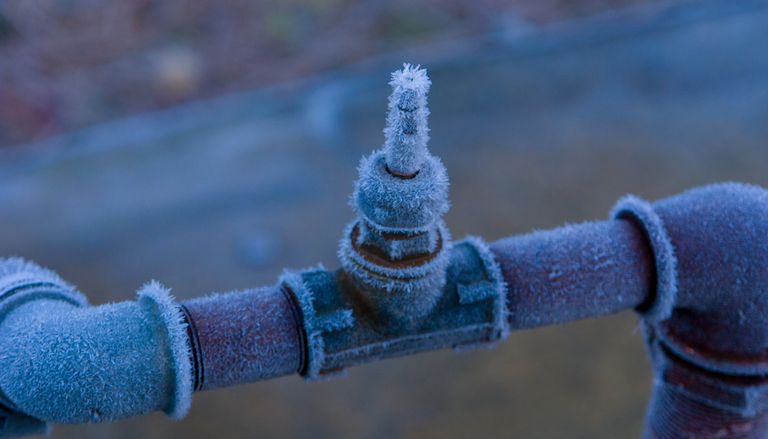Just how do you really feel with regards to Winter Plumbing Precautions: Preventing Frozen Pipes?

Winter can ruin your pipes, particularly by freezing pipes. Right here's exactly how to avoid it from taking place and what to do if it does.
Intro
As temperatures decline, the threat of frozen pipes rises, potentially leading to costly repair services and water damages. Comprehending exactly how to prevent icy pipes is important for property owners in chilly climates.
Recognizing Frozen Pipes
What triggers pipelines to freeze?
Pipes freeze when exposed to temperatures below 32 ° F (0 ° C) for prolonged periods. As water inside the pipes ices up, it expands, putting pressure on the pipe walls and possibly causing them to burst.
Dangers and problems
Frozen pipelines can cause water supply disruptions, residential or commercial property damage, and pricey repair work. Burst pipes can flood homes and trigger extensive architectural damage.
Indicators of Frozen Piping
Determining frozen pipelines early can stop them from bursting.
Just how to identify icy pipes
Search for reduced water circulation from faucets, uncommon smells or noises from pipes, and noticeable frost on revealed pipes.
Avoidance Tips
Shielding susceptible pipelines
Cover pipes in insulation sleeves or use warmth tape to shield them from freezing temperature levels. Concentrate on pipes in unheated or exterior areas of the home.
Heating techniques
Maintain interior spaces effectively heated up, especially locations with plumbing. Open closet doors to enable warm air to circulate around pipelines under sinks.
Safeguarding Outside Plumbing
Yard hose pipes and exterior taps
Disconnect and drain pipes yard pipes before winter. Install frost-proof spigots or cover outdoor taps with insulated caps.
What to Do If Your Pipes Freeze
Immediate actions to take
If you believe icy pipelines, maintain faucets available to alleviate stress as the ice thaws. Use a hairdryer or towels soaked in warm water to thaw pipes slowly.
Long-Term Solutions
Architectural changes
Consider rerouting pipelines far from outside walls or unheated locations. Add added insulation to attics, basements, and crawl spaces.
Upgrading insulation
Purchase premium insulation for pipes, attic rooms, and wall surfaces. Appropriate insulation assists maintain constant temperatures and decreases the risk of icy pipelines.
Final thought
Preventing icy pipelines requires aggressive measures and fast feedbacks. By comprehending the reasons, indicators, and preventive measures, homeowners can secure their plumbing during cold weather.
6 Proven Ways to Prevent Frozen Pipes and Protect Your Home
Disconnect and Drain Garden Hoses
Before winter arrives, start by disconnecting your garden hoses and draining any remaining water. Close the shut-off valves that supply outdoor hose bibs and leave the outdoor faucet open to allow any residual water to drain. For extra protection, consider using faucet covers throughout the colder months. It’s also important to drain water from any sprinkler supply lines following the manufacturer’s directions.
Insulate Exposed Pipes
Insulating your pipes is an effective way to prevent freezing. Pipe insulation is readily available at home improvement stores and is relatively inexpensive. Pay close attention to pipes in unheated areas such as the attic, basement, crawl spaces, or garage. Apply foam insulation generously to create a buffer against the cold. You can also wrap your pipes in heat tape or thermostat-controlled heat cables for added warmth.
Seal Air Leaks
Inspect your home for any cracks or openings that could let in cold air. Seal any holes around the piping in interior or exterior walls, as well as the sill plates where your home rests on its foundation. Additionally, make sure to keep your garage door closed unless you’re entering or exiting. Leaving it open creates a significant air leak that can lead to frozen pipes.
Allow Warm Air Circulation
During cold snaps, it’s essential to allow warm air to circulate evenly throughout your home. Leave interior doors ajar to promote better airflow. Open kitchen and bathroom cabinets to help distribute heat consistently around the rooms. If you have small children or pets, be sure to remove any household chemicals or potentially harmful cleaners from open cabinets for safety.
Let Faucets Drip
A small trickle of water can make a big difference in preventing ice formation inside your pipes. When temperatures drop significantly, start a drip of water from all faucets served by exposed pipes. This continuous flow helps prevent the water from freezing. Additionally, running a few faucets slightly can relieve pressure inside the pipes, reducing the chances of a rupture if the water inside does freeze.
https://choateshvac.com/6-proven-ways-to-prevent-frozen-pipes-and-protect-your-home/

I stumbled upon that piece about Prevent Frozen Pipes when doing a search on the internet. Are you aware of anybody else who is very much interested in the topic? Feel free to share it. I truly appreciate reading our article about Winter Plumbing Precautions: Preventing Frozen Pipes.
Estimating